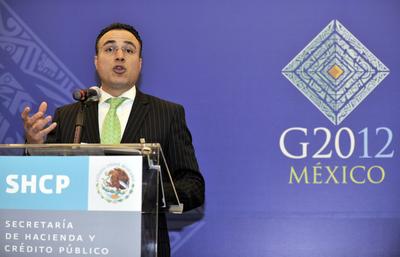G20 leaders have the opportunity to launch a concerted effort to remove the policy and market failures causing serious infrastructure bottlenecks to growth, especially in developing economies. The prospect of a new sustainable source of effective demand could counter the current drift toward a ‘lost decade’ — an extended period of high unemployment, high risks and low returns on investment leading to continued weak growth,high unemployment and debt.
There is no prospect of repeating the coordinated 2009 Keynesian stimulus of increased government spending. Some countries have run out of fiscal space, while others have opted for needless short-term austerity. Consequently, the World Bank paper advocates a new form of fiscal stimulus that is not simply a boost to public consumption, but an investment in future productivity.This form of stimulus would catalyse parallel private investment and serve as a globally coordinated investment initiative, rather than an attempt to stimulate individual economies.
Such a global Keynesian initiative would remove constraints to growth in developing economies, and create new demand in developed economies suffering from high unemployment and excess capacity. Investment in infrastructure can thus generate a virtuous cycle of higher demand, productivity and growth that isconsistent with long-term deleveraging.
The proposal, based on extensive research, argues for the need to find a way out of the current situation, when monetary stimulus is proving inadequate, and when structural adjustment can only be expected to gain traction when demand is revived. Governments need to support demand and employment without adding further to debt levels in the medium run. Providing capital for potentially self-financing infrastructure investment to remove logistic and other constraints to growth would be the best way of doing this.
The report also cites evidence that such a stimulus does not risk crowding out private spending, but can be expected to contribute significantly to employment and growth. The authors demonstrate the potential for profitable infrastructure investment in all economies, while noting that the highest needs and potential returns are in developing economies.
By learning from experience, including the disappointing experience of Japan in the 1990s, it is possible to select the right kind of investment in infrastructure. The paper draws attention to initiatives that support good project selection and design, such as the Infrastructure Action Plan — drawn up in 2011 as part of the G20’s contribution to the development of low-income countries — and the Infrastructure Finance Center of Excellence, which aims at leveraging Singapore’s expertise in urban development and financing.
The G20’s ongoing effort to improve infrastructure in low-income economies should be extended to all economies. Recent estimates of annual requirements for investment and available financing for infrastructure identify a financing gap in the range of US$400 billion to US$650 billion per year. Narrowing this gap would have a significant global macroeconomic effect. The paper discusses numerous options for mobilising additional finance, ranging from domestic revenue raising to local and international bond issuance, and public-private partnerships. These are just some of the ways to steer more of the available global savings toward productivity-boosting infrastructure.
The potential contribution of infrastructure investment to promoting global economic recovery has been discussed for a while. And at a time of deficient global demand, the huge savings of emerging economies — most of which are generated in Asia — are intermediated chiefly in the financial markets of New York and London. Rather than financing productive infrastructure, much of the world’s savings are financing the deficits of already heavily indebted developed economies. The time has come to deal with this massive global financial market failure. Asian members of the G20 have put the infrastructure opportunity on the G20’s growth agenda. This well-researched World Bank paper should ensure it rises to the top of that agenda.
It will take time and creative thinking to meet the financing needs for infrastructure. A High-Level Panel on Infrastructure appointed by G20 leaders delivered a useful report at the 2011 Cannes Summit. That report contains recommendations for improving the institutional and enabling environment for investment in infrastructure, and ideas for financing infrastructure projects with significant but delayed returns to investors and how to manage project risks. But the Panel focused only on much-needed infrastructure in the world’s most difficult investment environments, especially sub-Saharan Africa.
The issues of institutional capacity, innovative financing and risk management need attention everywhere and need to be addressed if investment in infrastructure is to provide a globally significant boost to effective demand. G20 leaders should now challenge their officials, financial-sector managers, and international financial institutions to find ways to intermediate savings to finance more investment in infrastructure. These ideas can be directed to financing both public and private investment in commercially-viable investment in infrastructure wherever it is needed. A high-level conference of the world’s leading experts on these issues, which might be organised by the World Bank could be a useful first step in that direction.
Dr Andrew Elek is Research Associate at the Crawford School of Economics and Government, Australian National University. He was the inaugural Chair of APEC Senior Officials in 1989.

